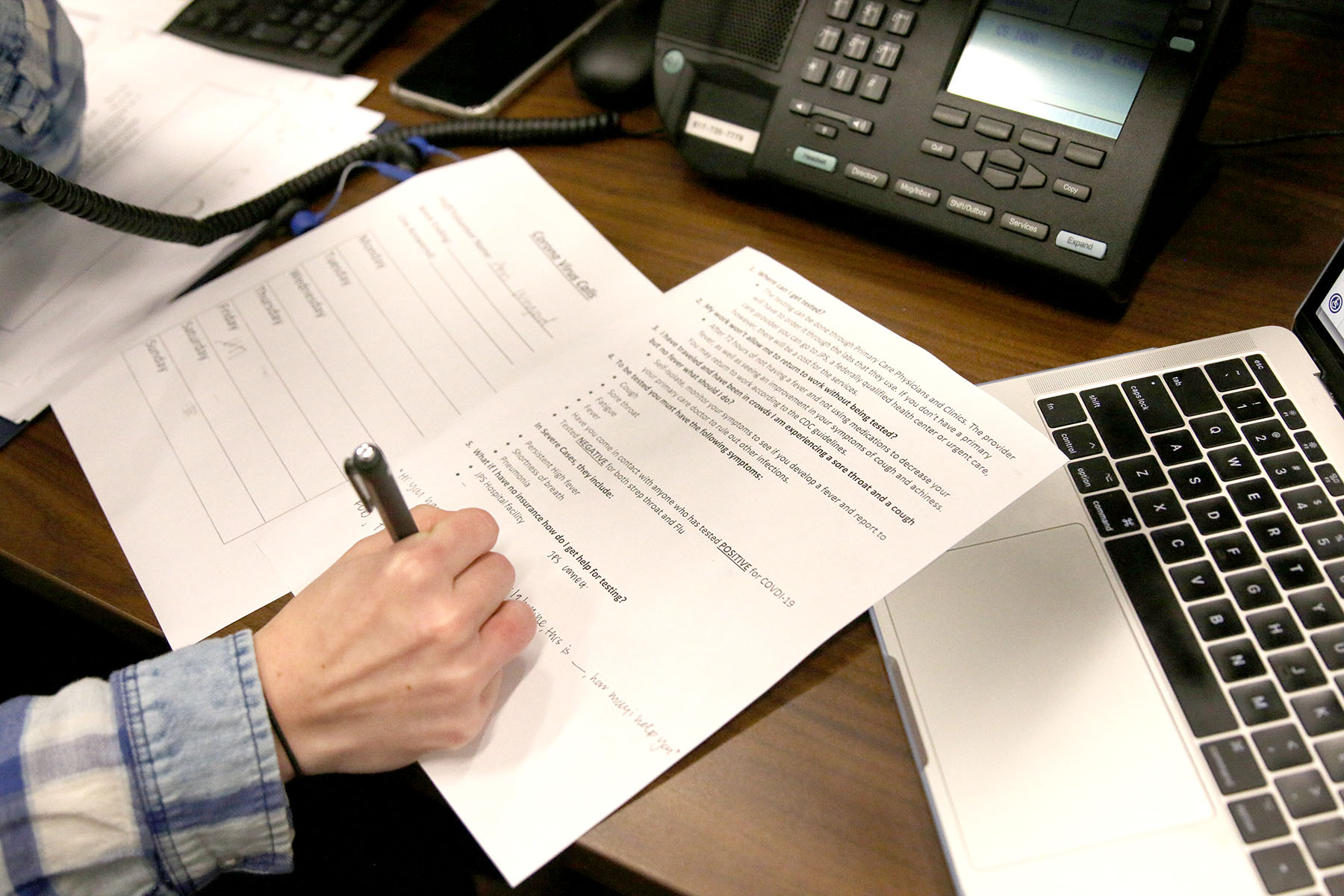Gov. Greg Abbott’s recent executive order and public statements are leading the Lone Star State toward a phased easing of shelter-in-place orders. As many Fort Worth businesses prepare to reopen in the coming weeks, local public health officials and university staff are ramping up efforts to track and quarantine COVID-19 cases through a disease monitoring method called contact tracing.
The Centers for Disease Control and Prevention (CDC) cites contact tracing as part of the government’s “multipronged approach to fight the COVID-19 pandemic.” The idea is to use trained contact tracers to identify and communicate with individuals who have tested positive or are showing symptoms of COVID-19. Once the contact tracer reaches the symptomatic individual, the tracer explains important basics about the disease before asking the sick individual to recount his or her whereabouts over the previous two weeks.
Dr. Diana Cervantes with UNT Health Science Center (UNTHSC) recently talked about what Fort Worthians can expect as local and county contact tracing efforts expand in the coming weeks. Cervantes and her team of epidemiologists used contact tracing to help isolate three Ebola cases in Dallas six years ago. While COVID-19 is far less deadly than Ebola, she said, the potential two-week incubation period and spread by respiratory droplets will make containing the novel coronavirus difficult.
“People tend to forget where they went two or three weeks ago,” she said. “Contact tracers will want to know about any high-risk transmission settings” that infected individuals may have entered, such as a retirement community.
Although the work of monitoring an area as large as Tarrant County requires fast action, taking time to build some level of rapport with area residents is part of any contact tracer’s job, Cervantes added.
“You want to make sure that you have a long enough conversation so the person feels that they can trust you,” she said. “The longer you talk to people, the more they relax and start to remember things. You might ask them if they have a planner to help them jog their memory, then you just start going through the day.”

A brief interaction with someone while wearing a facemask is usually not a cause for alarm, Cervantes said. Close proximity of 30 minutes or longer or the types of physical contact found between romantic partners will likely necessitate a call to warn the other person that he or she is at high risk of contracting COVID-19.
Even then, the contact tracer will use his or her discretion when deciding how to warn the other individual. The infected person may want to handle notifying friends or family about possible infections themselves. If the sick person being interviewed was around a large group of colleagues, those employees may be notified via email or another form of mass communication. A mass email may notify a workplace that someone who tested positive for COVID-19 was in the vicinity and that workers should monitor their symptoms accordingly.
Anyone who believes they came into contact with someone who has COVID-19 should self-quarantine for 14 days, Cervantes said. Going two weeks with no symptoms or fever (100.4 degrees Fahrenheit) is a reasonable indication of non-infection.
The Johns Hopkins Center for Health Security, a nonprofit that studies epidemics and disasters, recently estimated that the United States will need an initial 100,000 contact tracers to begin safely reopening the country without placing a burden on the U.S. healthcare system.
UNTHSC communications director Alexander Branch said 60 students from the UNTHSC School of Public Health have undergone training at Tarrant County Public Health and are now working 20 hours per week to investigate potential cases of COVID-19 infections. The medical students use data they collect to warn businesses and facilities of potential exposure to infected persons. The students work in teams to notify, interview, and monitor people who have been in contact with infected individuals. Richard Hills, Tarrant County Public Health spokesperson, said the county, as of April 22, has 22 contact tracers.
Cervantes said that automated contact tracing through the use of smartphone apps can augment Tarrant County’s contact tracers, but there will still need to be a “big group” of active volunteers and trained tracers working around the clock to prevent another outbreak.
Can contact tracing provide a safe means of reopening the economy?
“I am optimistic,” she said. What is important is that “restrictions are lifted in a manner that is data-driven and slow. If you have a huge influx of cases, contact tracing goes out the window. There has been a lot of emphasis on testing, which is important. We can’t possibly test everybody all the time to find out who is sick. That’s where you have to rely on contact tracing.”











